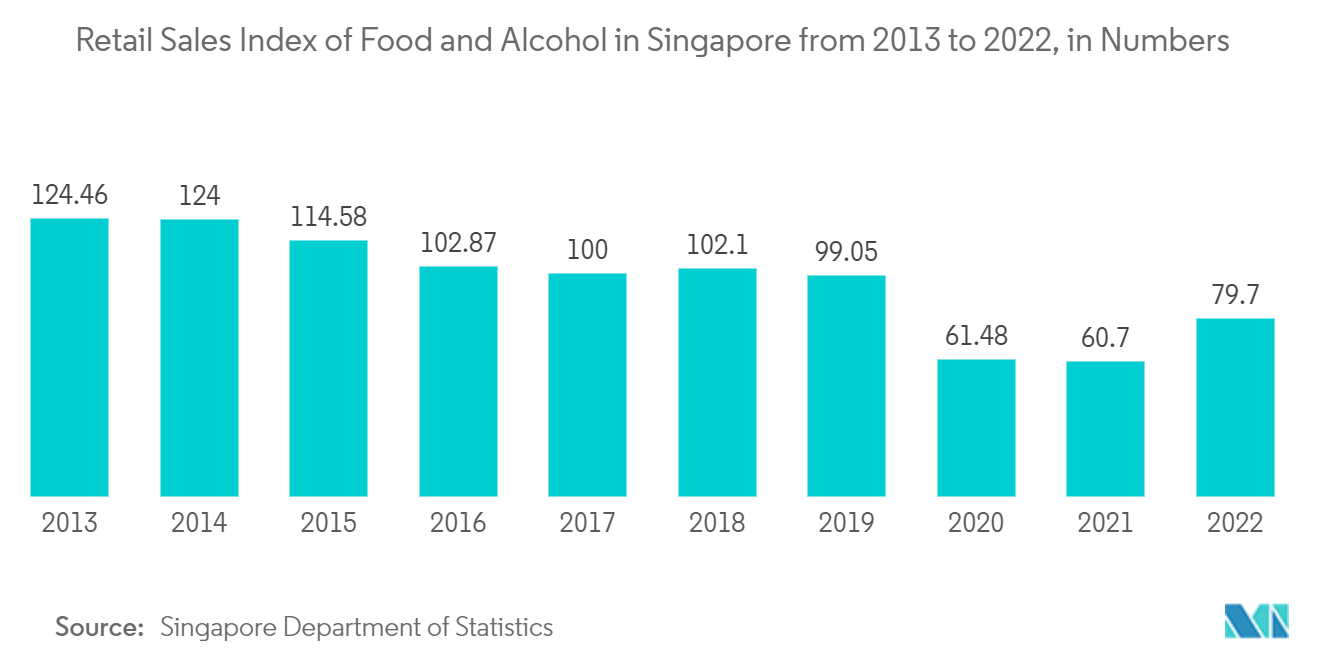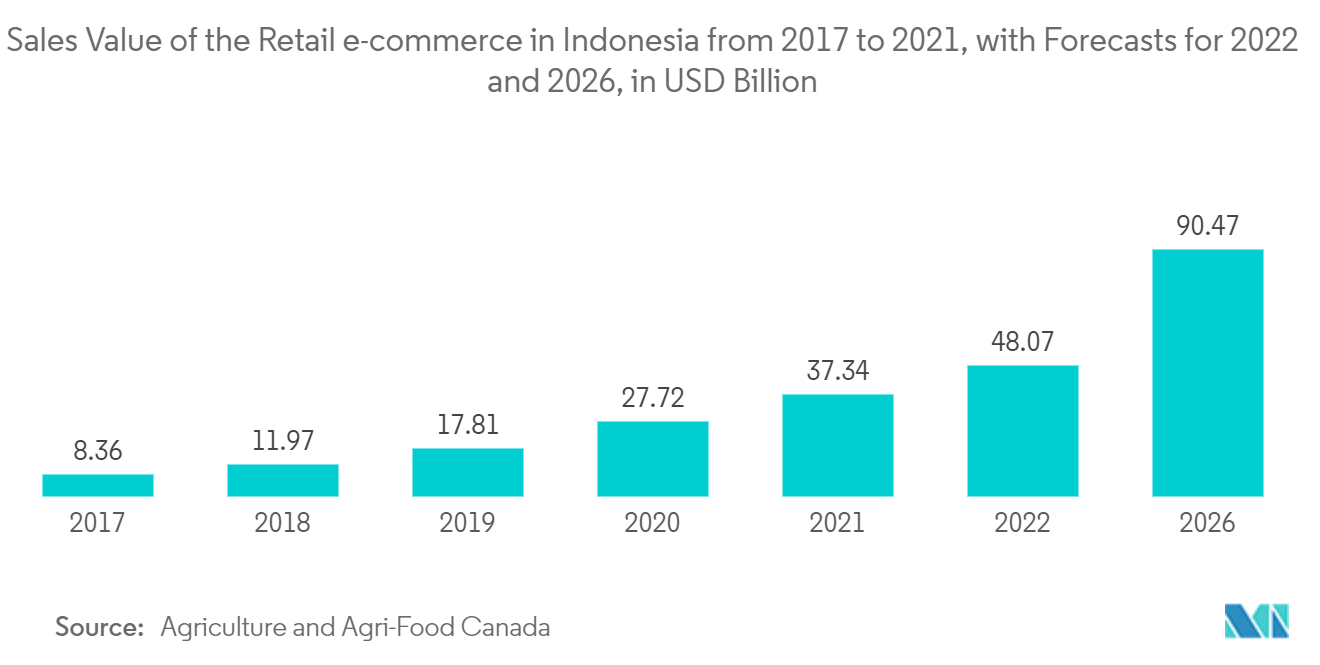Market Trends of Southeast Asia Warehouse Automation Industry
Retail (Incl. e-commerce) Sector to Dominate the Market
- Retail warehouse automation is a service that retailers may employ to streamline logistical operations, enhance customer satisfaction, and boost revenues. Retail enterprises provide products and services to end users, including supermarkets, departmental stores, clothing, general merchandise, appliances, and food and beverages. Additionally, the segment in the study also considers e-commerce. The warehouses of retail businesses often handle a huge volume of SKUs, which can be kept on pallets or in boxes. All procedures must be optimized to avoid mistakes and ensure the product is available to clients.
- Retailers will continue using warehouse automation to keep up with an ever-increasing e-commerce trajectory and consumer service and personalization demands. To add value and meet high brand standards, top retailers are implementing automation to speed up the last mile of their supply chain. In addition to managing many SKUs, they prepare and ship a tremendous volume of orders daily to a wide range of locations. Given these limitations, automation is a great way to increase production while ensuring accuracy and speed in order picking.
- According to The Business Times in Singapore, most businesses intend to utilize their investments in new technology on various levels. 76% intend to provide clients with individualized shopping experiences by installing identifying systems in the establishments. In addition to the substantial automation of operations, sensors and cameras for warehouse management are also anticipated.
- Food and beverage warehouses required more stock and throughput to keep up with the shift in demand brought on by COVID-19. In order to correctly manage many SKUs in a constrained amount of space, food and beverage warehouses must have the necessary logistical capabilities. Facilities must adjust and offer a range of outbound order types due to a surge in demand for own-brand labels, prepared goods, and e-grocery.

Indonesia is Expected to Hold a Significant Market Share
- The logistics vision for Indonesia for 2025 is "locally integrated, globally connected," consistent with transforming the national logistics system into Logistics 4.0. The goal is to connect and fully integrate the domestic distribution system across the entire nation. Second, the pandemic has had a significant negative impact on supply and demand patterns for international trade. "Smart Logistics 4.0" was created to modernize technology-based logistics. As a result, trade processes between vendors, logistics services, and final consumers are greatly improved.
- Additionally, smart warehouses assist in lowering human errors that can be costly for building contractors and significantly raise operating expenses. Despite the pandemic, BGR Logistics contributed to the nation's economic recovery. BGR Logistics has developed several innovations, including smart warehouses, to advance Indonesia's logistics sector.
- Furthermore, as the number of users in Indonesia's e-commerce market is expected to grow in 2023, e-commerce is expected to increase the demand for warehouse automation. Notably, the market's user base has steadily increased over the past few years. The demand for digital commerce is rising as more consumers switch their purchasing habits to online platforms. With more consumers using their smartphones and tablets to make purchases, one of the market's prominent trends is the expanding use of mobile commerce.
- Moreover, Indonesia has one of the highest e-commerce adoption rates globally. Indonesia's e-commerce market value increased to USD 43 billion in 2021, making it the ninth largest in the world. Online sales in Indonesia's thriving e-commerce market grew by 23%, and there were about 63 million additional users. 90% of the country's internet users between 16 and 64 have purchased online. A change in consumer behavior among tech-savvy consumers willing to pay more for convenience is propelling the e-commerce market in Indonesia. Indonesia's e-commerce market has a bright future thanks to its youthful population, rising internet penetration, e-wallet boom, and policies geared toward the digital economy.



